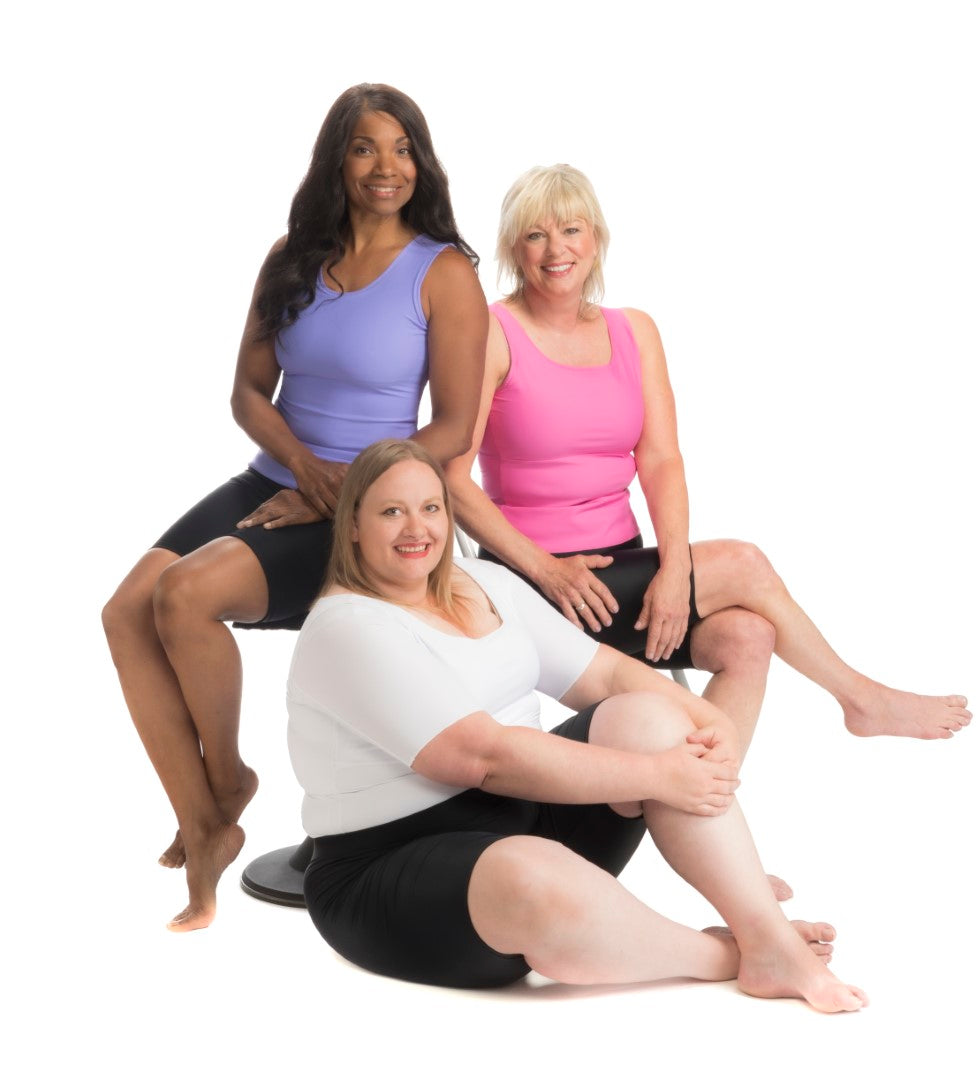What Is Torso (Truncal) Lymphedema and Fibrosis?
Torso (truncal) lymphedema occurs when lymph fluid accumulates in the chest, back, axilla, or abdomen. Fibrosis is thick, scar-like tissue that develops from chronic swelling or treatment effects and can make lymphedema harder to manage.
Fibrosis is a common consequence of lymphedema, and addressing it is essential for effective treatment. At its core, fibrosis is the buildup of abnormal tissue, often bulky and scar-like, that becomes thick and unyielding over time. Radiation therapy, surgery, trauma, or long-standing swelling can all make tissues stiff, less mobile, and resistant to fluid flow.
When fibrosis is left unchecked, the problem compounds. Dense, hardened tissue blocks and can trap lymphatic fluid, which creates even more swelling. That swelling then can create further tissue thickening. This cycle can eventually make lymphedema more persistent and difficult to reverse. (For more background, see our article Why You Should Address Fibrosis in Your Lymphedema Therapy for Optimal Results.)
Torso and Abdominal Fibrosis Is Common
When lymphedema and fibrosis come up in conversation, the focus is often on arms and legs. But as Karen Ashforth, MS, OTR/L, CLT-LANA, points out in the educational video associated with this post, the torso and abdomen are also vulnerable—especially in women recovering from breast cancer treatment. Surgeries, lymph node dissections, radiation, and even some medications can disrupt the body’s natural lymphatic pathways in the chest, back, and abdominal regions.
Common Types of Upper Body Fibrosis

(C) 2025 Karen Ashforth, used with permission.
Torso fibrosis can appear in many ways, including:
- lymphostatic fibrosis – tissue hardening from chronic lymphatic congestion
- surgical or traumatic scarring – scar tissue after procedures such as mastectomy or reconstruction
- radiation-induced fibrosis – stiffening and damage of tissues from radiation therapy
- cording (axillary web syndrome) – tight, ropelike bands that commonly occur in the axilla (armpit), chest or arm following breast cancer surgery
-
seroma fibrosis – fibrotic tissue formed from pockets of post-surgical fluid
- fat necrosis – hard lumps of damaged fat tissue which can occur after reconstructive procedures involving fat transplant
- wound bed fibrosis – fibrotic scarring in or around poorly healed wounds
- post-cellulitis fibrosis – scarring and tissue hardening after skin infections
Many of these conditions can progress quickly. That’s why early treatment is key—not only to improve effectiveness, but also to limit discomfort and prevent long-term damage.
How Therapists Treat Torso Fibrosis and Lymphedema
Therapists begin by identifying the source of lymphatic dysfunction, whether it’s scars, irradiated tissue, or areas of dermal backflow and congestion. Treatment may involve manual lymphatic drainage, scar mobilization, or other hands-on techniques. Modalities such as low-level laser therapy, positive and negative pressure and pneumatic compression are also used. But no matter the approach, one thing is consistent: compression is the cornerstone of long-term management.
Compression: A Foundational Tool


Torso compression garments—such as camisoles, bras, or T-shirts—play a central role in both preventing and treating lymphedema. By applying steady, gentle pressure, compression can:
- Improve circulation and lymphatic flow
- Prevent new swelling after surgery
- Control chronic swelling and its complications
- Enhance comfort, reduce pain, and improve mobility
When compression is combined with anti-fibrotic fabrics or pads, its benefits go even further. The textured surfaces of anti-fibrotic compression treatments create a micro-massage effect that promotes decongestion, relieves pain, and can gradually softens fibrotic tissue.
Wear Ease Torso Solutions

At Wear Ease, we’ve worked closely with certified lymphedema therapists (CLTs), fitters, and patients to create compression garments that balance clinical effectiveness with everyday comfort. Our torso compression products are designed to reduce swelling, address fibrosis, and make consistent wear practical.
Some of our trusted solutions include:
- Andrea Shirt – Built-in axilla pads stay in place, making this shirt ideal for cording, drain scars, and lymph node dissection scars.
- Katy T Compression Shirt – Provides all-over thoracic compression with removable anti-fibrotic axilla pads for targeted treatment.
- Anti-Fibrotic Pads and Swell Spots – Created in partnership with L&R, these pads come in multiple sizes and shapes and integrate easily with Wear Ease camisoles and bras to address focal fibrosis or scarring.
- Sternum Anti-Fibrotic Pad – Designed to stimulate parasternal lymph nodes, this accessory adds versatility to a torso-focused treatment plan.
The Karena Bra: A Breakthrough in Compression



One of our most exciting innovations is the Karena bra, inspired by lymphedema expert Karen Ashforth, MS, OTR, CLT-LANA. Patients were asking for a discreet, low-profile garment that delivered strong anti-fibrotic benefits without bulky pads. The Karena bra does just that.
Its secret lies in the textured compression fabric, which produces a gentle micro-massage effect. The textured surface increases local shear forces that help mobilize fluid and can gradually soften fibrotic tissue as well as reduce swelling and increase comfort. Patients have reported:
- Decreased pain and swelling
- Softer, more pliable tissue
- Improved skin texture and scar appearance
- Faster, more noticeable relief
Because it covers a broad area while remaining comfortable, the Karena bra has quickly become a favorite for daily wear.
Wear Ease Supports Healing and Comfort
Fibrosis and lymphedema of the torso are often overlooked, but they have a significant impact on recovery, mobility, and overall quality of life. With early treatment, manual therapy, and targeted compression, patients can disrupt the cycle of swelling and tissue hardening. Wear Ease’s thoughtfully designed garments, shaped by the expertise of clinicians and feedback from patients, give therapists reliable, effective tools to support healing and comfort.




